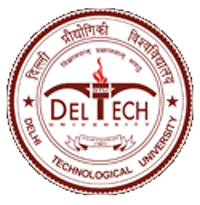Please use this identifier to cite or link to this item:
http://dspace.dtu.ac.in:8080/jspui/handle/repository/22232| Title: | STUDIES ON DESIGN, OPTIMIZATION AND CHARACTERIZATION OF PEROVSKITE SOLAR CELLS |
| Authors: | KUNDARA, RAHUL |
| Keywords: | OPTIMIZATION PEROVSKITE SOLAR CELLS SOLAR ENERGY SCAPS-1D XGB MODEL |
| Issue Date: | Mar-2025 |
| Series/Report no.: | TD-8265; |
| Abstract: | Solar energy has become an increasingly important alternative source of power in the quest to mitigate environmental impact of fossil fuels and reduce global carbon footprint. The advancement of solar cell technologies has played a significant role in this transition, with solar cells evolving over the years in efficiency, material use, and fabrication methods. The development of various generations of solar cells has opened new avenues for harnessing solar power more effectively and sustainably. Among the most promising innovations in solar technology are perovskite solar cells (PSCs), which have gained attention due to their high efficiency and potential for low-cost production. Solar cells work by converting sunlight into electricity, a process that depends on the properties and behaviour of the materials used to construct them. The most widely used solar cells today are silicon-based, but these cells have limitations in terms of cost, efficiency, and material availability. As a result, need of exploration of alternative materials and structures to overcome these challenges. Among the newer types of solar cells, perovskite-based cells have shown significant promise due to their ease of fabrication, high absorption coefficient, and relatively low production costs. Perovskite materials, which have a unique crystal structure, offer excellent electrical, optical, and physical properties that make them ideal for use in solar cells. However, the use of lead-based perovskites materials in solar cells has raised significant environmental and health concerns. Lead is a toxic substance, and the potential for environmental contamination during production, use, and disposal of these materials has prompted lead-free alternatives. These lead-free PSCs are not only more eco-friendly but also have the potential to maintain or even surpass the performance of their lead-based counterparts. A wide range of materials, including tin (Sn), germanium (Ge), bismuth (Bi), antimony (Sb), and silver (Ag) have been explored as substitutes for lead. While these materials have shown potential, achieving the same level of efficiency and stability as lead-based PSCs remains a substantial challenge. To optimize the performance of lead-free PSCs, we have employed simulation tool such as SCAPS-1D, a software designed to model the behaviour of solar cells under various conditions. This software has been instrumental in fine-tuning device structures and parameters that affect performance, such as the thickness of absorber layer, operating temperature, defect density, series resistance, radiative recombination rate, shunt resistance, work function of back contact, energy band gap and carrier concentration. By optimizing these factors, we can design solar cells with improved efficiency and stability, even when using alternative perovskite materials such as (CH3NH3)2CuX4, LaFeO3, KSnI3, CsSnI3 and KGeCl3 have all been simulated employing SCAPS-1D to assess their potential as lead-free solar cell materials. The design of PSCs also involves optimizing the structure of the layers used in the cell, such as the electron transport layer (ETL) and hole transport layer (HTL), as well as the perovskite absorber layer. The interaction between these layers plays a crucial role in determining the overall efficiency of the solar cell. By carefully selecting and optimizing the materials and thickness of these layers, we can enhance the efficiency of the devices. In addition to material optimization, the development of machine learning techniques has provided new insights into the design and prediction of vii solar cell performance. By training machine learning modes with experimental data and simulation results, we can predict the performance of different material combinations and device structures, thus reducing the time and effort needed for trial-and-error experimentation. The machine learning model also predicts the effect of distinct parameters on device performance and PCE using SHAP plot, XGB and RF algorithm. XGB model predicts performance with higher accuracy. The machine learning model analysis is helpful for the fabrication of efficient device. This integration of machine learning and simulation tool is accelerating the development of high-performance, lead-free solar cells. The synthesis of novel perovskite materials also plays a key role in advancing solar cell technology. For instance, the sol-gel method has been used to synthesize LaFeO3 and Cs2AlBiCl6 materials for solar cell applications. These materials are characterized using techniques such as XRD, SEM, UV-Vis and FTIR spectroscopy to assess their structural and optical properties. The characterization results provide valuable insights into the suitability of these materials for use in solar cells, guiding the design for more efficient and cost-effective devices. Cs2AlBiCl6, a double perovskite material, is a promising lead-free PSC material with excellent structural and optical properties. We synthesized and characterized it, confirming its photovoltaic potential. Developing such lead-free perovskites is vital for sustainable, efficient solar technologies that can advance clean energy solutions and address climate change. |
| URI: | http://dspace.dtu.ac.in:8080/jspui/handle/repository/22232 |
| Appears in Collections: | Ph.D. Applied Physics |
Files in This Item:
| File | Description | Size | Format | |
|---|---|---|---|---|
| RAHUL KUNDARA pH.d..pdf | 7.31 MB | Adobe PDF | View/Open |
Items in DSpace are protected by copyright, with all rights reserved, unless otherwise indicated.



